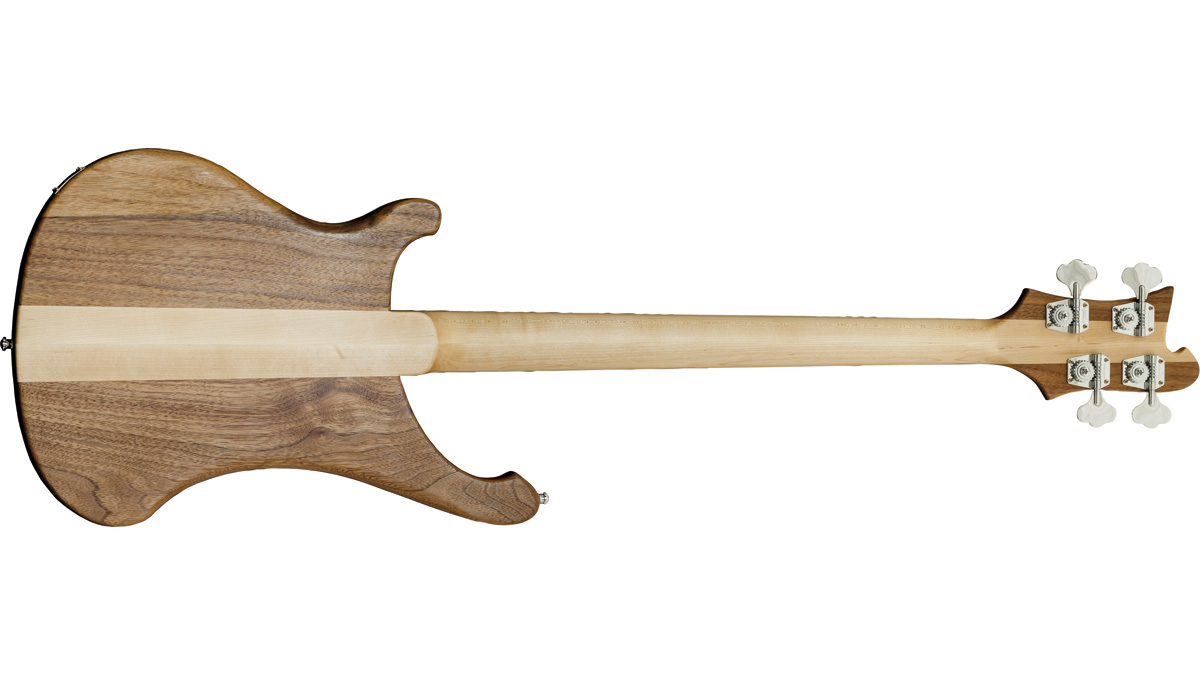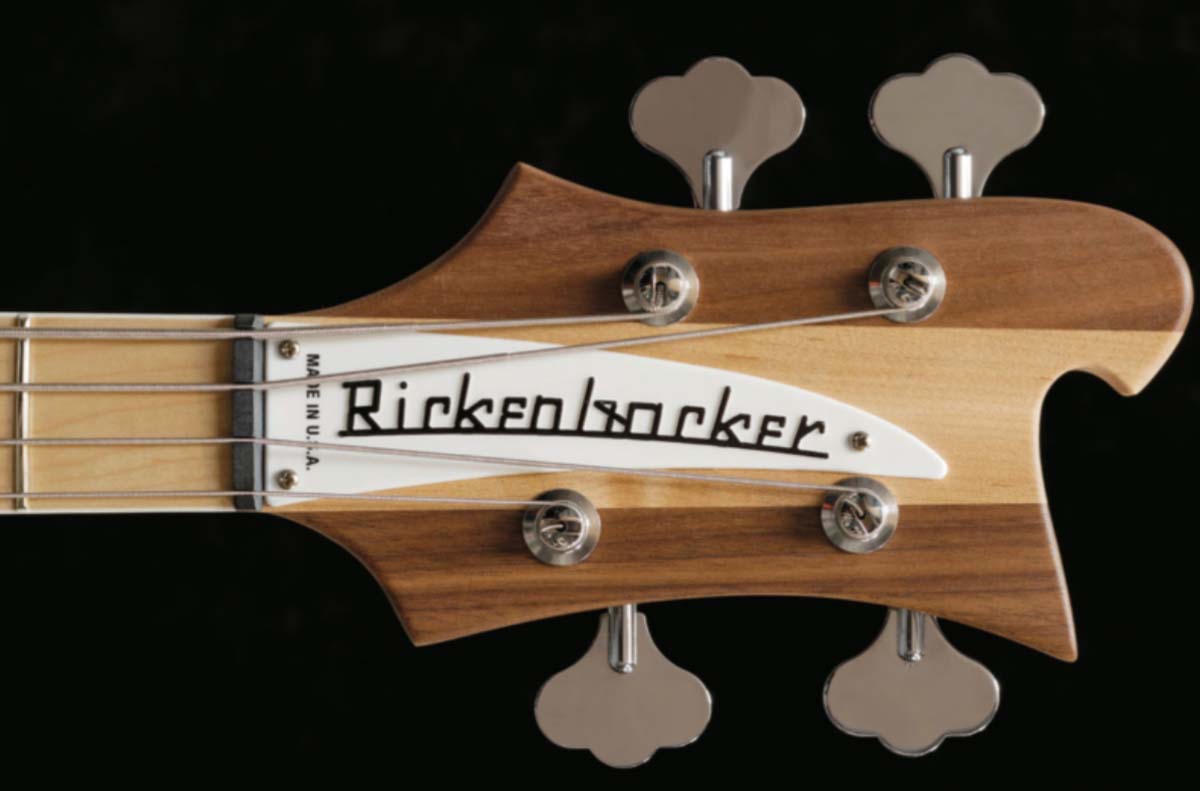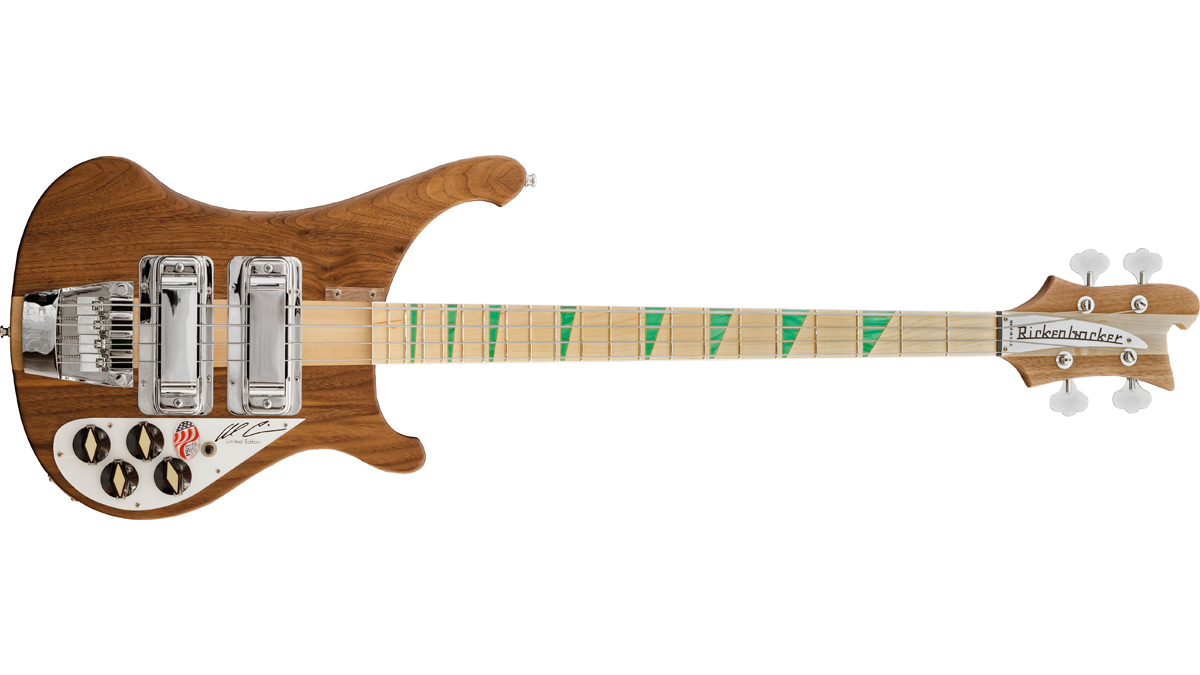Guitar World Verdict
A exceptionally high-functioning instrument - do try it out this Deluxe 4003 if you get the chance.
Pros
- +
Superb build quality and playability.
- +
Classic Ricky tones and looks.
- +
Excellent weight.
- +
Adjustable bridge saddles.
Cons
- -
It's expensive.
- -
Those Ricky tones and looks aren’t for everyone.
You can trust Guitar World
If you’re not familiar with the work of Al Cisneros, bassist with the stoner-rock band Sleep and the experimental act OM, we recommend that you head to YouTube without delay.
If you’re not into heavy music, don’t let that put you off; bassists of all musical preferences will learn from his unique approach to the instrument.
Formed primarily of droned figures and chords, played with a heavy fingerstyle anchored close to (or actually on) the neck, Cisneros’ method refers back to pioneers such as Geezer Butler while also being wholly his own.
We mention this because Cisneros’ new Rickenbacker 4003 is designed to fulfil the particular needs of his playing style. For example, had he been a pick player, attacking the strings down by the bridge, the massive bezels which cover the pickups would not have been included.
This bass is a miracle of modern engineering from top to bottom, with real thought evidently put into every working element by Cisneros and Rickenbacker
As he plucks the strings by the neck, they’re present and correct. In addition, so much of Cisneros’ music is thematically or otherwise related to smoking weed that the neck inlays are green, and only 420 models are being made (4/20, get it?). Whether or not you personally ingest the stuff, you have to agree that it makes for a fascinating art direction.
So how does it play? And does it justify its immense price tag? Let’s plug in and find out...

Build Quality
At this price, there should be no build flaws in this passive, through-neck bass, and moreover, we expect to be impressed by the high quality of the components, judgmental hacks that we are.
Fortunately, this bass is a miracle of modern engineering from top to bottom, with real thought evidently put into every working element by Cisneros and Rickenbacker.
The specific innovations which Cisneros has asked Ricky to include begin with serious modifications such as the ‘newly re-engineered’ (their term, our quotes) tailpiece and bridge with adjustable saddles.
As research into one or two bass forums reveals, more than a few Rickenbacker fans have wanted the 4003 bridge to feature adjustable saddles for some time, although there are a similar number of bassists for whom such modern fripperies are practically blasphemous.
The body’s light oil finish, which is barely detectable under the fingers, will no doubt divide opinions, too.
This is a standard, if highly souped-up, 4003W – with all the expectations of performance that Ricky fans should rightly demand
Other changes include the use of two hot-wound treble pickups, as distinct from the 4003’s usual one bass, one treble pickup configuration, and a slight migration down the body (i.e. away from the neck) of the upper pickup.
Less radical stuff includes a signed pickguard, custom knobs, green inlays – which usually denote a stereo-output bass, although this one is mono – and a transparent thumb rest at the base of the neck.
The maple neck and fretboard are bound, too, the bass has Schaller open-gear elephant-ear tuners, and the truss rod can be adjusted for both up‑bow and back-bow. Otherwise, in terms of features, this is a standard, if highly souped-up, 4003W – with all the expectations of performance that Ricky fans should rightly demand.
Sounds And Playability
Traditionalists will not be disappointed. The Cisneros 4003 sounds almost comedically like a Rickenbacker if you leave the tone controls flat, with a scratchy, percussive start to each note, followed by that thin, clear, glassy, transparent bloom that we all know.
Roll the top end off and select the front pickup and it becomes much warmer and James Jamerson-like, however, and the bottom end is fairly thick and heavy when maxed out. Play up in the higher register, and the clank goes away without you needing to dial it out.

The point of the two treble pickups – one of which is closer to the bridge than you’d normally expect – is obviously to compensate for the tonal consequences of Cisneros’ playing style. Rest your thumb on the rest, all the way up by the neck, and you’ll hear exactly what we mean.
That playing position, where you benefit from a slightly rubbery feel to the strings as you pluck them, is easy on the hand and encourages expressive playing, but at the same time it’s hardly conducive to high mids and top end. Thanks to the aforementioned tweaks, there’s plenty of both available.
The bass is highly playable in that position, make no mistake – the rear neck finish is beautifully smooth, and the finger-friendly nut width of 42.9mm (1-11/16’’) encourages you to stretch out, even if it does feel a bit weird at first.
If you prefer to address the strings elsewhere, or if you use a pick, take off the bezels and you’ll be fine. The instrument’s weight is highly manageable, too; the giant bridge means that there’s a lot of metal attached to this instrument, but at nine pounds, your back should be happy (‘should’ being the operative word).
Conclusion
The 4003 AC is an excellent bass, fully-featured, fully-finished and very pleasant to play. The tones are great and the components pretty much state of the art. The only two issues that come to mind are the price, which is a painful kick in the wallet no matter how you frame it, and the fact that this bass is set up to meet the specific needs of a bassist with an unusual playing style.
The second of these is highly soluble – just rearrange the hardware and you’re good to go – but there’s no getting away from the massive cost, other than to state that you’re definitely getting value for money, and that this bass will no doubt last a lifetime if you look after it.
Placed in that context, is this actually an expensive item? Not particularly. Give it a shot, with our full recommendation.
Specs
- Price: $3399 / £4350
- Made In: USA, ltd to 420
- Body: Walnut
- Neck: Maple, 33.25” scale
- Neck Join: Neck-through
- Fretboard: Maple, bound, 20 frets
- Pickups: 2 x hot-wound single-coil trebles, removable bezels supplied Controls | 2 x volume, 2 x tone (push/ pull for vintage tone), 3-way pickup selector
- Hardware: Rickenbacker ‘newly re-engineered’ bridge, Schaller Deluxe tuners
- Weight: 4.1 kg / 9 lbs
- Case/gigbag: Hard case
- Contact: Rickenbacker
Joel McIver was the Editor of Bass Player magazine from 2018 to 2022, having spent six years before that editing Bass Guitar magazine. A journalist with 25 years' experience in the music field, he's also the author of 35 books, a couple of bestsellers among them. He regularly appears on podcasts, radio and TV.
“An esoteric boutique vibe, superb ergonomics and a powerful, unique preamp – Tobias is back”: Tobias Growler IV review
“Affordable versions of the three best basses I've ever held in my hands”: Sterling by Music Man completes its trilogy of Joe Dart signature models with a trio of made-to-order basses that cost less than $500












